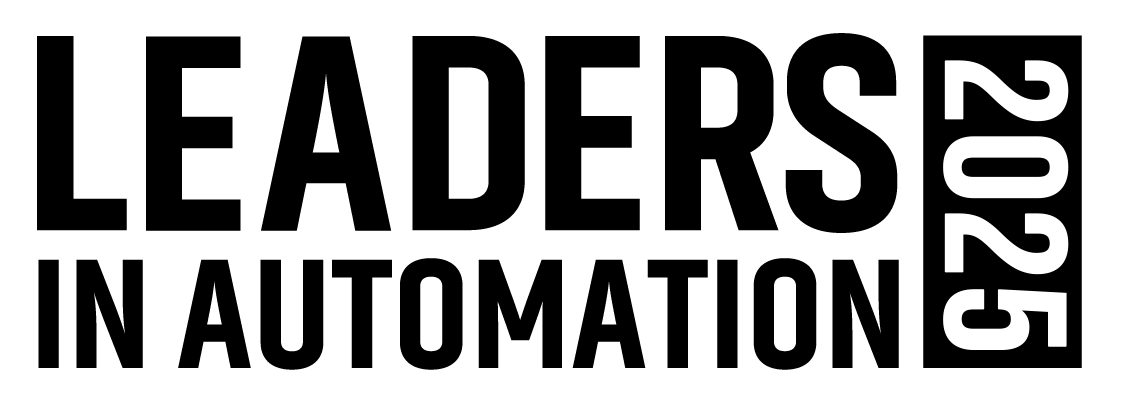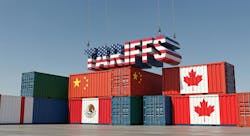Tariffs Impact Automation Technologies as Suppliers Begin Passing Through Costs
- Nearly 83% of PMMI packaging/processing industry members report being affected by tariffs, with Endress+Hauser nearly doubling its supply chain surcharge from 4.5% to 8.4% between May and August 2025.
- Processors and chips used in devices ranging from vision sensors to flow meters are experiencing the highest tariff impacts.
- More automation companies are looking to move manufacturing from China to Europe and the U.S. in response.
In April 2025, shortly after the Trump administration announced its tariff plans, Automation World reached out to several automation technology suppliers to gauge the potential impact on buyers of industrial automation equipment. In that article, “Tariff Turbulence and the Impacts on Industrial Automation Technologies”, which was developed based on those responses, the general consensus was that the automation markets might slow as companies recalculate ROI and navigate uncertainty around the tariffs. However, most respondents said they did not expect significant impacts on product availability or lead times, at least in the short term.
This picture began to change by August 2025, as could be seen in a survey report from PMMI (The Association for Packaging and Processing Technologies) and an announcement from Todd Lucey, general manager of Endress+Hauser USA.
According to the results of PMMI’s “Tariff Quickie Survey,” 82.8% of PMMI members who completed the survey reported being affected by the newly imposed tariffs. The most frequently cited impacts were increased procurement costs for imported parts (86.1%), price increases for domestic customers (59.7%) and higher costs for domestic parts (45.8%).
For customers that have larger known initiatives and hardware requirements, we have offered to buy products in bulk and maintain the inventory for them. This would control future tariff increases and ensure availability, but it is not a long-term solution to tariffs.
Lucey’s announcement centered on the implementation of a surcharge due to ongoing supply chain tariffs, which, for Endress+Hauser, increased from 10% to higher levels. As a result, the 4.5% supply chain surcharge on all products implemented on May 12, 2025, increased to 8.4% on August 22, 2025 (except optical analysis products, which remain at 4.5%).
In his announcement of this surcharge, Lucey noted that Endress+Hauser is not fully passing tariff costs to customers where possible and remains focused on optimizing supply chains for future tariff mitigation and increasing U.S. production, while continuing to invest in domestic manufacturing.
In addition to Lucey’s notice about the surcharge, Michael DeMaria, director of product management at Fluke Reliability, released this statement about the tariffs: “Tariffs are a blunt instrument, effective for shielding industries, but not for building the capacity needed to reindustrialize and drive long-term manufacturing strength. Recent hikes on steel, aluminum and other imports may protect U.S. producers in the short term, but by raising input costs, they erode downstream manufacturing, making the industry far less competitive globally. Fundamentally, these protectionist measures have failed to address critical and persistent issues. In the U.S., factory jobs have fallen for three straight years, with June 2025 marking another month of decline. Combined with the cost environment and policy uncertainty, manufacturers are more than reluctant to expand.
“Risk of stagnation isn’t solely due to tariffs or foreign competition, but rather a domestic shortage of skilled labor and advanced production capacity is also playing a factor. While tariffs have an intention to drive domestic manufacturing, without parallel investment in workforce development and smart manufacturing technology, they simply preserve a shrinking share of the market instead of cultivating newfound growth.”
Paul Rogers, president and CEO Americas and Asia Pacific at Hexagon Manufacturing Intelligence, echoed DeMaria's workforce concerns saying: “Our research shows that 56% of manufacturers cite tariff pressure as a problem, [leading] many (31%) to accelerate reshoring initiatives. But without the skilled workforce to support those plans, reshoring efforts risk stalling — a concern shared by nearly a third of manufacturers we spoke to. With the industry already staring down a potential shortfall of millions of unfilled jobs over the next ten years, workforce strategy is no longer optional.”
To get an update on the impacts to automation technology pricing and availability since the publication of our April article, Automation World (AW) again reached out to numerous suppliers. The response this time was far more muted than it was in April, but we did receive responses from:
- Matt Greiner (MG), vice president of controlling and administration at Weidmuller USA;
- Bryan Little (BL), food and beverage segment director and electrical SME at system integrator Actemium Avanceon; and
- Dan White (DW), director of technical marketing at Opto 22. Note: Since Opto 22 manufactures its products in the U.S. with limited import of components, much of Dan’s comments repeated statements he provided for the April article on tariffs and can be seen there.
Here’s what they had to say:
We see that customers understand the impact of tariffs is real. There is a feeling of “it is what it is” because this issue is seemingly out of the scope of our collective control.
AW: Are tariffs yet affecting the prices of the products you supply? If so, how?
BL: Yes, much like Endress+Hauser and other suppliers, we have implemented flat rate price increases across all products due to tariffs.
DW: To date, tariffs have not materially increased the prices of Opto 22 products. Because we manufacture all our products in the U.S., our direct exposure remains limited.
MG: Yes, as a large majority of our products are manufactured in Europe and Asia, we did start to feel those increased costs once the tariffs were implemented on U.S. imports. We are passing through those costs via an item surcharge. Our goal is to be transparent and to minimize this cost impact to our customers as best as possible. We did take proactive actions to increase inventory ahead of the expected tariff dates, which allowed us to delay the impact to our customers.
AW: Are there particular components of your products that are being most affected by the tariffs?
BL: Components with processors and certain IC chips. Mostly items with analog signals and computing power, such as vision sensors/cameras. These are products similar to Endress+Hauser offerings, like flow meters.
MG: Yes, our products that are manufactured in China are obviously being hit the hardest by the tariffs. We do have strategic actions in motion now to address this concern. For example, more manufacturing had been shifted to Europe already before the tariffs, and we have opened a U.S. manufacturing facility at our headquarters in Richmond, Va. These actions will create less reliance on China manufacturing for our U.S. business in the future.
We are investing in our digital capabilities that will drive improved supply and demand planning, which will allow us to be more proactive in the anticipation of tariff changes.
AW: Will the tariffs impact product availability or lead times? If so, how?
BL: We have not seen an impact to lead times due to tariffs yet but predict it may have some impact in the future, especially if the tariffs continue and hardware demand slows. Obviously, supply chains change slowly, which is what we are seeing now. As the tariffs go on, supply chains will adjust to today’s demand and any future increase in demand will be impacted in that response times will slow.
DW: We have not seen any impact on product availability or lead times to date. Opto 22 maintains a sizable inventory of raw materials and finished goods, which helps buffer against supply disruptions.
MG: We are committed to maintaining a strong service level to our customers. These increased tariff costs do create additional challenges to manage inventory and cashflow, but we have struck the right balance to ensure our lead times are not being substantially extended.
AW: Are you working on any further strategies to minimize tariff costs?
BL: We have some situational strategies that focus on inventory management efficiency. Because of all the press on tariffs, we see that customers understand the impact of tariffs is real. There is a feeling of “it is what it is” because this issue is seemingly out of the scope of our collective control.
DW: We have not needed to implement additional measures beyond what we already do. Our long-term approach — maintaining domestic control of our manufacturing and supply chain, coupled with careful inventory planning — continues to minimize our exposure and keep pricing stable. Some components sourced through distributors may carry tariff-related costs, either embedded or added separately, but the overall impact on our pricing and availability remains minimal.
MG: Yes, we have multiple strategic efforts in focus to minimize tariff costs. As already mentioned, we are in the process of expanding our manufacturing footprint outside of China. Second, we are investing in our digital capabilities that will drive improved supply and demand planning, which will allow us to be more proactive in the anticipation of tariff changes. We also participate in “Free Trade Zones” when requested by customers. Minimizing the tariff impact on our customers as best as possible will remain our goal.
We have not seen an impact to lead times due to tariffs yet but predict it may have some impact in the future, especially if the tariffs continue and hardware demand slows.
AW: What recommendations do you have for customers looking to secure stable pricing and supply for their automation technologies?
BL: For customers that have larger known initiatives and hardware requirements, we have offered to buy products in bulk and maintain the inventory for them. This would control future tariff increases and ensure availability, but it is not a long-term solution to tariffs. Tariffs equal more costs until the product can be sourced in-country. This assumes that the product can be manufactured in-country at a cost similar or less than the tariffed product from an out-of-country source.
MG: It is always important to establish proactive communication and actions to create stability. We take pride in being a value-added partner to our customers, so we are always focused on how to best understand our customer’s needs and take the right proactive actions to help make them successful.
More tariff-driven recommendations for manufacturers
So, just what should automation buyers be doing now to secure stable pricing and supply? First, proactive communication with suppliers, as Matt Greiner noted above, is crucial. Understanding your suppliers' tariff exposure and mitigation strategies can help you make better sourcing decisions.
Second, for larger projects with known hardware requirements, consider bulk purchasing agreements where suppliers maintain inventory for you, as Bryan Little mentioned. It's not a permanent solution, but it can provide short-term stability.
Third, diversify your supplier base where possible. Don't put all your eggs in one geographic basket.
And finally, factor tariff volatility into your ROI calculations and project timelines. The days of assuming stable international supply chain costs may be behind us, at least for the foreseeable future.
More tariff-related content from Automation World:
About the Author
David Greenfield, editor in chief
Editor in Chief

Leaders relevant to this article:
